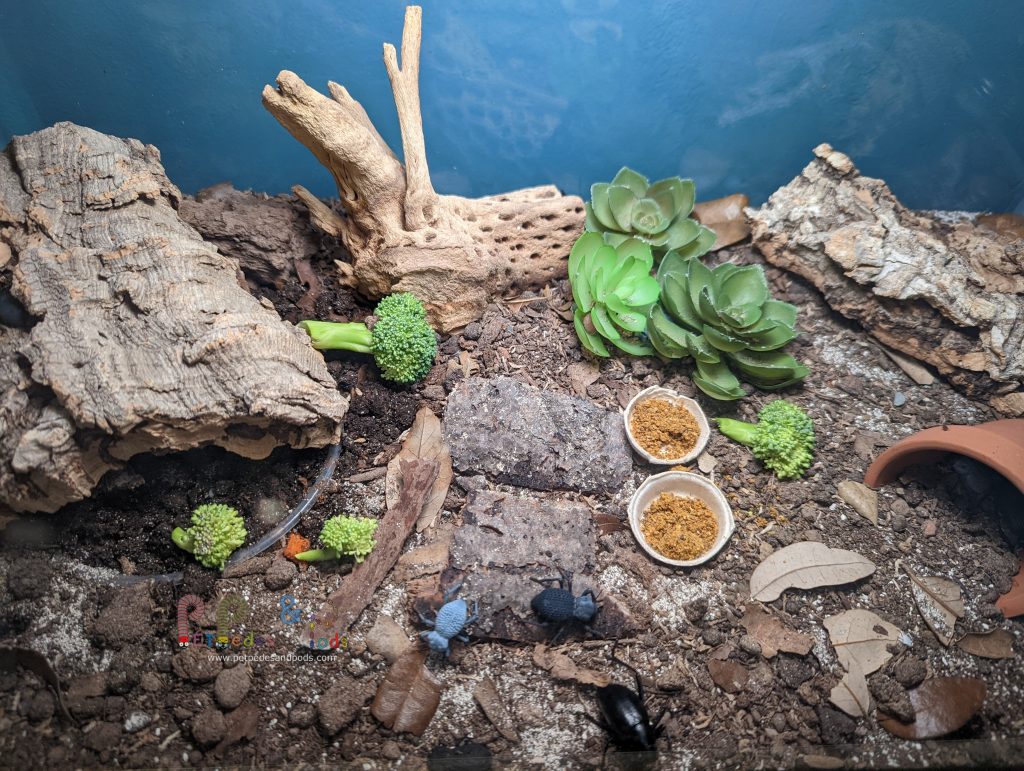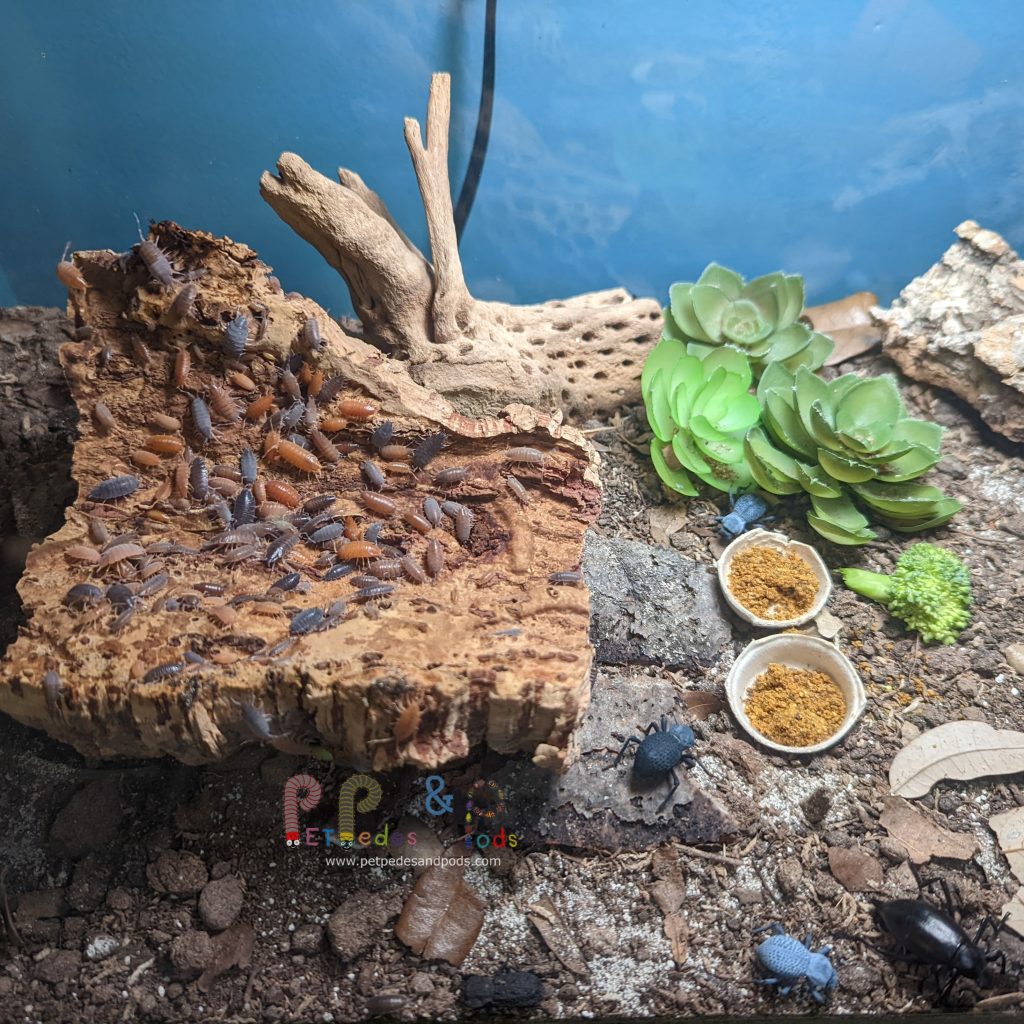My 10 gallon community desert habitat is home to an assortment of blue death feigning beetles, smooth death feigning beetles, diabolical ironclad beetles, several Eleodes beetle species, a superworm beetle that pupated at a pet store, and a thriving colony of Porcellionides pruinosus isopods.
You might be surprised to learn that isopods can live in a dry desert setup. After all, isopods are terrestrial crustaceans that require moisture and humidity to breath. But with the right setup and the right species of isopods, it can be done.
In this particular habitat, most of the enclosure is kept dry at all times. The substrate is a sand/soil mixture. On one end, I have an 8 ounce deli cup full of isopod substrate sunk into the sand/dirt mixture. I keep this cup of substrate watered at all times, and there is some cork bark and leaf litter over top of the moist area to offer hiding places, food, and to help keep the moisture from evaporating immediately. I chose to use Porcellionides pruinosus isopods (commonly known as “powder” isopods for their powdery sheen) since they are adept at thriving in a variety of environments, including arid type setups.
With this setup, I’ve found that not only are the pruinosus isopods surviving, they are thriving. The colony has grown many times to the point where I’ve pulled out isopods to seed other colonies. The desert beetles seem to benefit from having this moist hide area as well – many of the Eleodes beetles can be found hiding under the cork bark, and as an added benefit, this area gives all the beetles a place to lay their eggs. This habitat has produced a number of Eleodes beetle larvae that have gone on to pupate and turn into beetles. At night, the isopods leave the moist area and wander freely around the habitat, cleaning up waste left behind from the beetles.
After the success of the initial experiment, I repeated this setup for my Bynoe’s Geckos, which are a small desert species of gecko. I am using Porcellionides pruinosus isopods, a couple of blue death feigning beetles, and some mealworm beetles as the clean up crew, with similar success. I have found that since the geckos are small and fast, they like to snack on the isopods, so this isopod colony has not exploded like the one in the desert beetle setup with no predators.
For more reading, check out our article: Desert Beetle Care Guide


